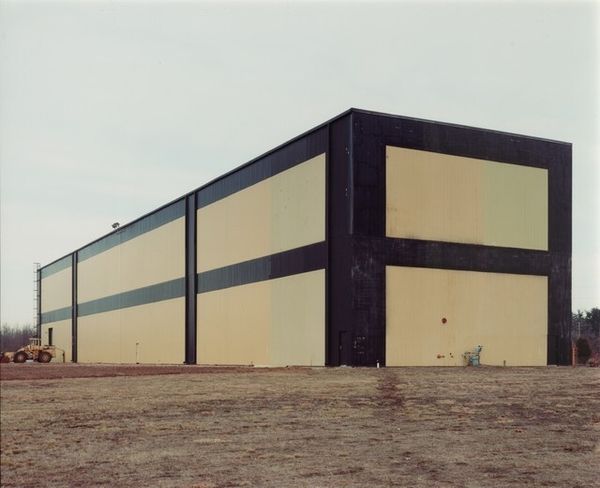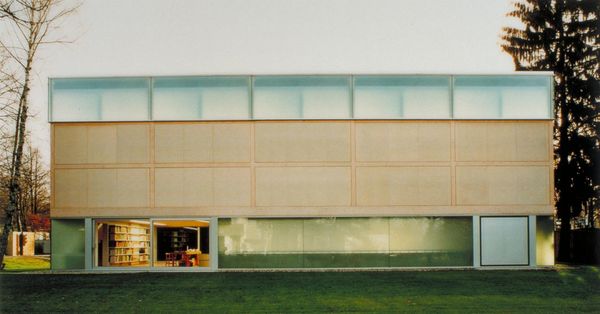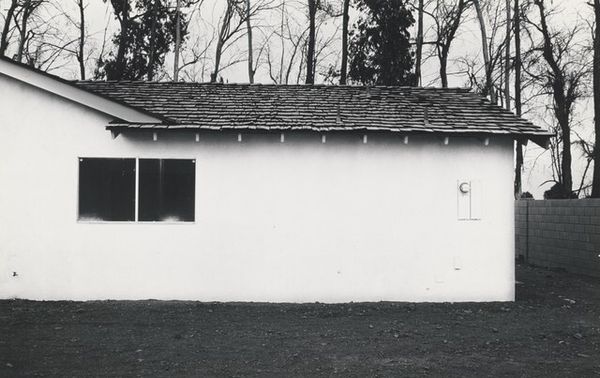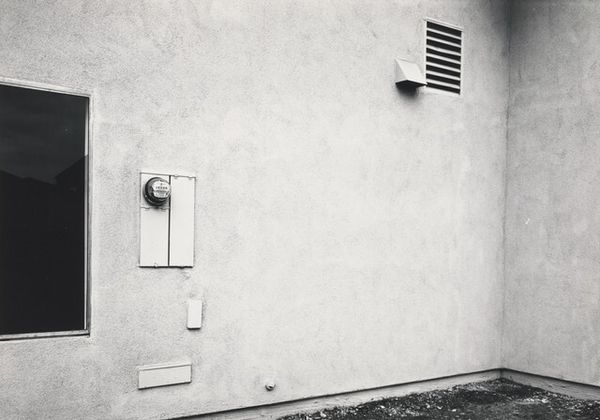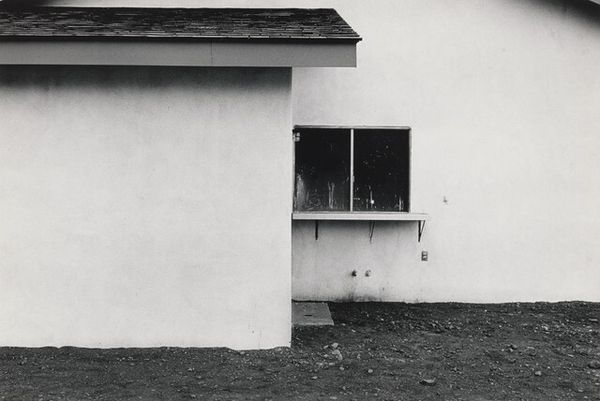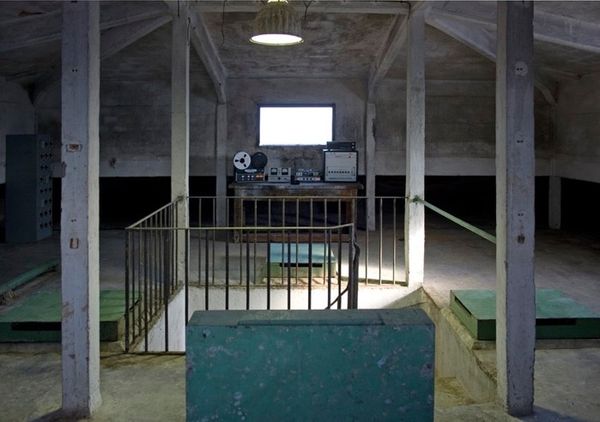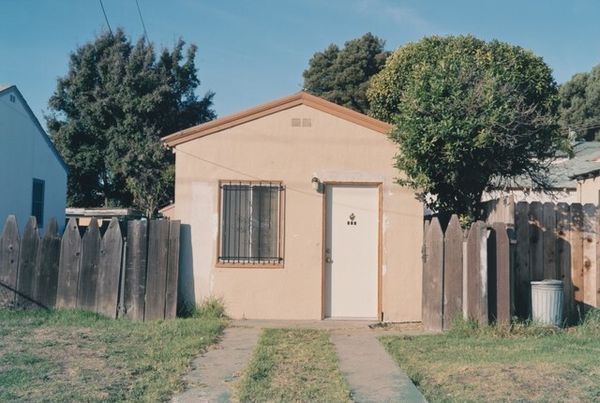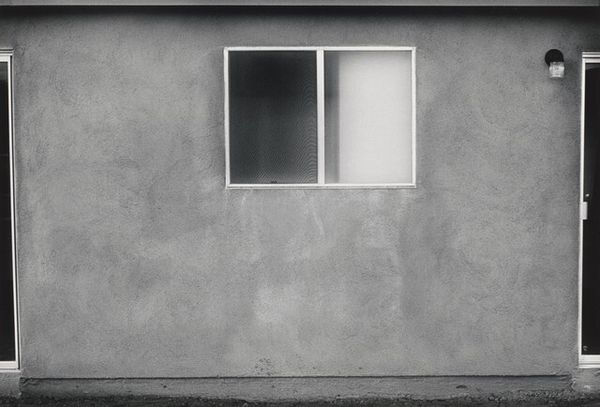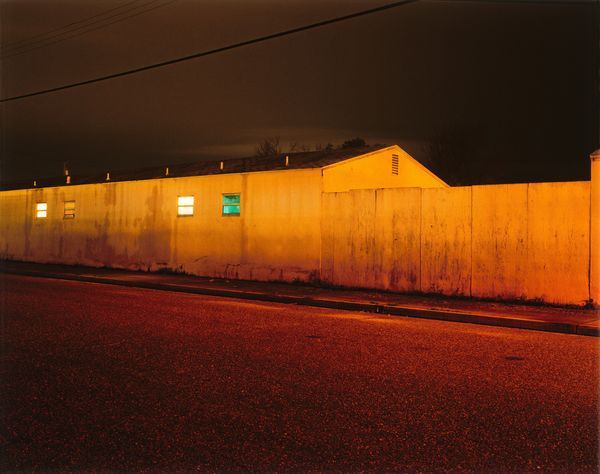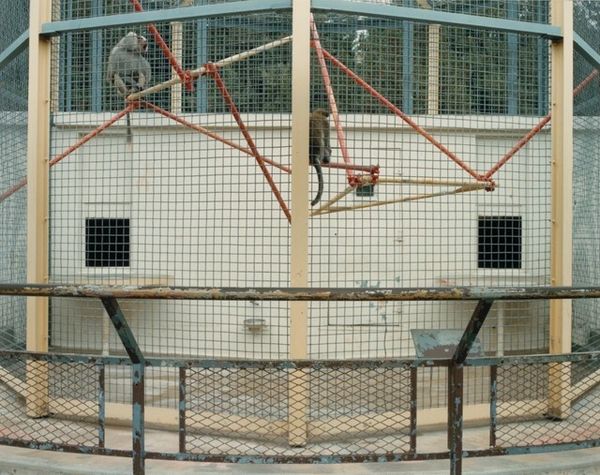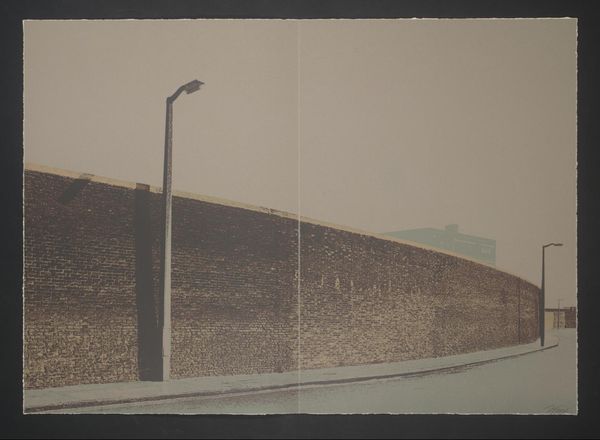
Dimensions: image: 458 x 456 mm
Copyright: © Stan Douglas, courtesy David Zwirner, New York | CC-BY-NC-ND 4.0 DEED, Photo: Tate
Editor: Here we have Stan Douglas's "Abstract Composition" from the Tate Collections. There's a starkness to this architectural image, a focus on planes and lines. What compositional elements strike you most? Curator: The photograph’s strength lies in its deceptive simplicity. The interplay of horizontal lines—the blue trim, the fence—against the large white wall creates a subtly disquieting tension. Note how the receding plane of the wall distorts the viewer's perception, challenging spatial assumptions. Douglas masterfully manipulates architectural elements into a study of form and surface. Editor: So, it's less about what it depicts and more about how it's put together? Curator: Precisely. Consider how the materiality of the wall, the visible texture, plays against the flat expanses of colour. The photograph invites us to decode its formal language, to contemplate the relationship between surface and depth. Editor: I see it now; it is a lot more than just a picture of a building. Curator: Indeed. It encourages a deeper engagement with the visual elements themselves.
Comments
No comments
Be the first to comment and join the conversation on the ultimate creative platform.
